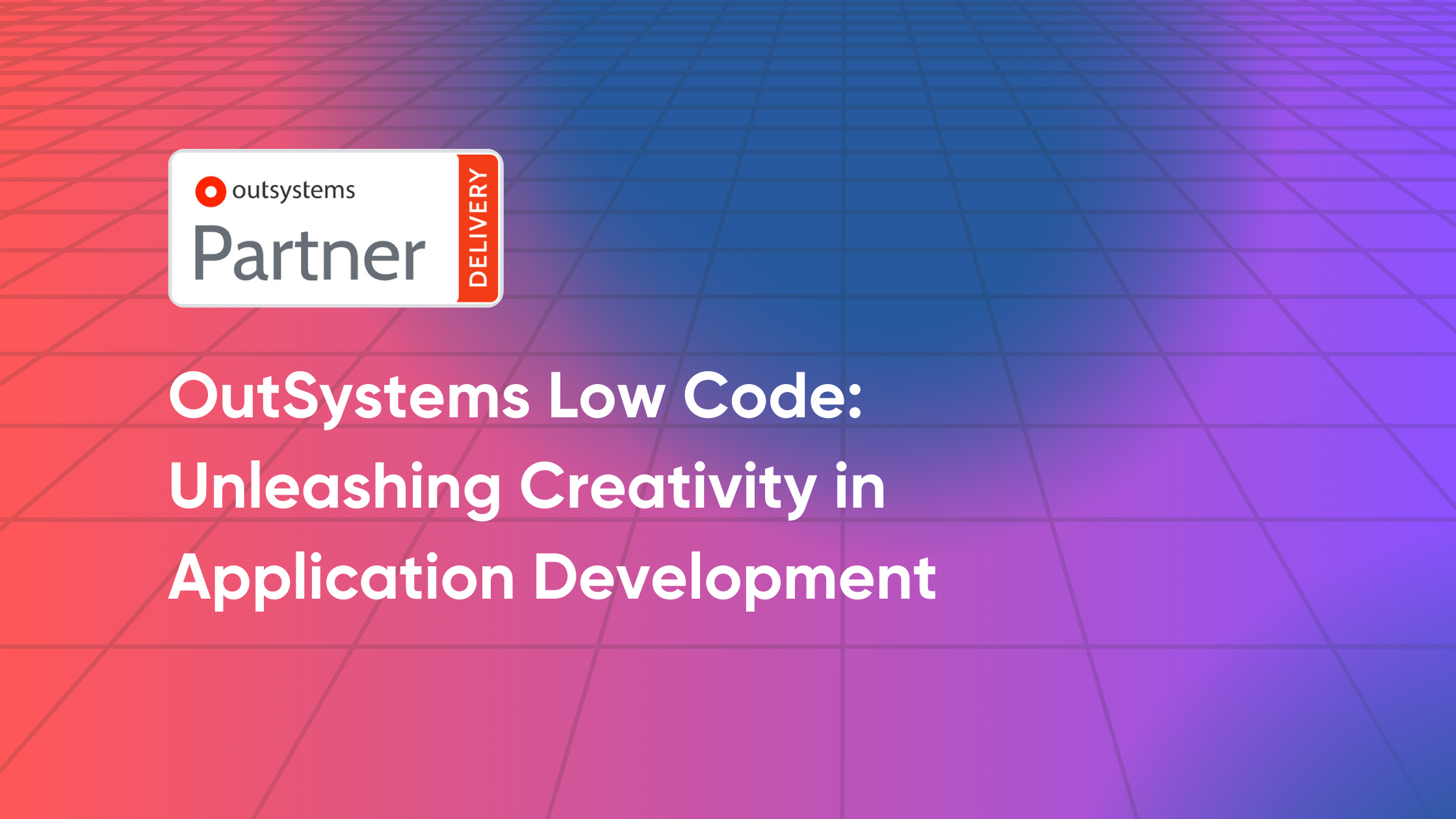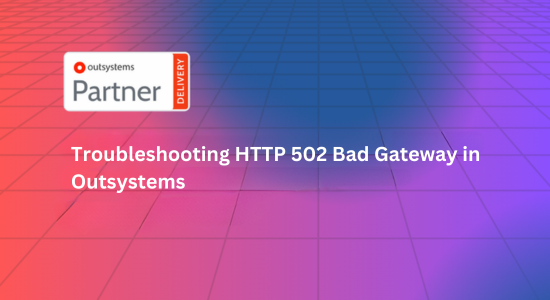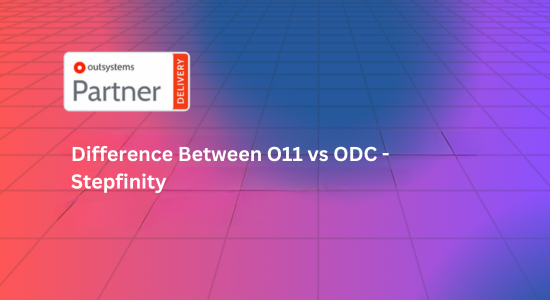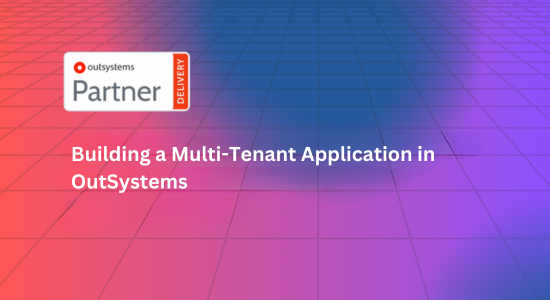In the digital era, businesses need innovative and efficient ways to develop applications that meet evolving market demands. OutSystems’ low-code platform empowers developers to unleash their creativity and build cutting-edge applications quickly and efficiently. This blog delves into how OutSystems facilitates creative application development, its key features, benefits, and real-world applications.
What is Low-Code Development?
Understanding Low-Code Development
Low-code development is a visual approach to application development that significantly reduces the need for hand-coding. It leverages:
- Drag-and-Drop Interfaces: Allowing developers to visually design applications by dragging and dropping components.
- Reusable Modules: Utilizing pre-built components to streamline the development process.
- Automated Workflows: Enhancing efficiency by automating business processes.
Benefits of Low-Code Development
Low-code development offers several advantages, including:
- Rapid Development: Accelerating the development process, reducing time-to-market.
- Cost Efficiency: Lowering development costs by minimizing the need for extensive coding.
- Flexibility: Enabling quick adjustments and iterations based on feedback and changing requirements.
Introduction to OutSystems
Overview of OutSystems
OutSystems is a leading low-code platform designed to facilitate rapid application development and deployment. It stands out for its:
- Comprehensive Toolset: Providing a wide range of tools for developing, integrating, and deploying applications.
- Scalability: Supporting applications of various sizes, from small internal tools to large enterprise solutions.
- Security: Offering robust security features to protect data and ensure compliance with industry standards.
Key Features of OutSystems
OutSystems is equipped with a host of features that enhance the low-code development experience:
- Visual Development Environment: A user-friendly interface for designing applications using drag-and-drop components.
- Full-Stack Development: Supporting both front-end and back-end development within a single platform.
- Integration Capabilities: Enabling seamless integration with existing systems, databases, and third-party services.
- Mobile Development: Facilitating the development of responsive and native mobile applications.
- AI-Assisted Development: Leveraging AI to provide development suggestions and automate repetitive tasks.
Unleashing Creativity with OutSystems
Rapid Prototyping and Iteration
OutSystems allows developers to quickly create and iterate on prototypes, enabling:
- Immediate Feedback: Receiving instant feedback from stakeholders to refine and improve applications.
- Experimentation: Encouraging creative experimentation with different design and functionality ideas.
- Flexibility: Making rapid adjustments based on real-time insights and evolving requirements.
Enhanced Collaboration
OutSystems fosters collaboration between developers, designers, and business stakeholders:
- Real-Time Collaboration: Allowing multiple team members to work on the same project simultaneously.
- Unified Platform: Providing a centralized platform for development, testing, and deployment.
- Stakeholder Involvement: Engaging stakeholders throughout the development process for better alignment and input.
Integration and Customization
OutSystems’ integration capabilities enable developers to:
- Seamless Integration: Integrate new applications with existing systems effortlessly.
- Custom Solutions: Create highly customized solutions tailored to specific business needs.
- Third-Party Services: Easily incorporate third-party services and APIs to enhance application functionality.
Benefits of OutSystems Low-Code Platform
Accelerated Development
OutSystems significantly reduces development time by:
- Visual Development: Simplifying the creation of applications through a visual interface.
- Pre-Built Components: Leveraging pre-built components and templates to expedite development.
- Automated Deployment: Streamlining deployment processes with automated workflows.
Cost Savings
OutSystems helps lower costs in several ways:
- Reduced Development Costs: Minimizing the need for extensive hand-coding and specialized skills.
- Maintenance Savings: Simplifying maintenance and updates with a unified platform.
- Scalable Solutions: Developing scalable applications without proportional increases in cost.
Enhanced Agility
OutSystems enhances agility by:
- Rapid Adjustments: Enabling quick modifications and iterations based on feedback and changing requirements.
- Adaptable Solutions: Allowing applications to be easily adapted to meet evolving business needs.
- Streamlined Operations: Streamlining operations through seamless integration with existing systems.
Improved Efficiency
OutSystems improves efficiency through:
- Automated Workflows: Automating complex workflows and business processes to reduce manual intervention.
- Error Reduction: Minimizing errors through automated, consistent processes.
- Performance Optimization: Offering tools for performance monitoring and optimization to maintain application performance.
Real-World Applications of OutSystems
Enterprise Applications
OutSystems is ideal for developing a wide range of enterprise applications, including:
- Customer Relationship Management (CRM): Building custom CRM systems tailored to specific business needs.
- Enterprise Resource Planning (ERP): Developing ERP solutions to manage core business processes.
- Human Resource Management (HRM): Creating HRM applications to streamline HR operations.
Legacy System Modernization
OutSystems assists in modernizing legacy systems by:
- Process Re-Engineering: Redesigning outdated processes to enhance efficiency and performance.
- Data Migration: Seamlessly migrating data and functionalities from legacy systems to modern applications.
- User Experience Enhancements: Improving user experience with modern, intuitive interfaces.
Mobile Application Development
OutSystems supports the development of responsive, native mobile applications:
- Cross-Platform Development: Enabling the creation of applications that work seamlessly across different devices and platforms.
- Offline Capabilities: Providing offline capabilities to ensure applications remain functional without an internet connection.
- Push Notifications: Supporting push notifications to enhance user engagement.
Getting Started with OutSystems
Initial Setup
Starting with OutSystems involves:
- Creating an Account: Signing up for an OutSystems account to access the platform.
- Environment Configuration: Setting up the development environment, including any necessary integrations and settings.
- Exploring Tutorials: Utilizing tutorials and resources provided by OutSystems to familiarize yourself with the platform.
Development and Deployment
The development and deployment process with OutSystems includes:
- Designing Applications: Using the visual development interface to design and build applications.
- Testing and Debugging: Thoroughly testing applications to ensure they function correctly and debugging any issues.
- Deploying Applications: Deploying applications to production environments and monitoring their performance.
Ongoing Support and Training
OutSystems offers ongoing support and training to help you maximize the platform’s potential:
- Technical Support: Providing technical support to address any issues or questions.
- Training Programs: Offering training programs and certifications to enhance your skills and knowledge.
- Community Resources: Accessing community resources, including forums, documentation, and best practices.
Conclusion
OutSystems’ low-code platform unleashes creativity in application development by providing a comprehensive, flexible, and efficient environment for building cutting-edge applications. With its rapid development capabilities, enhanced collaboration features, and robust integration options, OutSystems empowers developers to innovate and transform business processes. Embrace the future of low-code development with OutSystems and unlock new possibilities for digital innovation.








